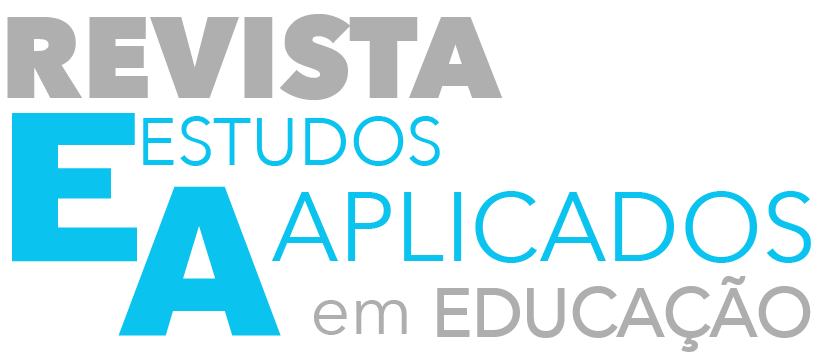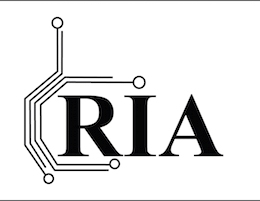Este sistema permite acesso a leitores, autores que pretendem submeter seus textos para publicação nos títulos editados pela USCS e também para os avaliadores.
Contato: 11 4227-7822 (Vera)
Revistas
-
Gestão & Regionalidade
A Gestão & Regionalidade é uma revista científica que tem como missão contribuir para a geração e disseminação de conhecimento na área de Administração de Empresas, considerando-se as sub-áreas tradicionais desta área de conhecimento, acrescidas da área denominada Estudos da Regionalidade. Os artigos submetidos à Gestão & Regionalidade que atenderem às normas de submissão serão avaliados por dois avaliadores ad hoc, na forma double blind review. A G&R foi lançada em setembro de 1983, com o título de Revista IMES. A partir de julho de 2000 passou a se chamar Revista Imes Administração. A partir do ano de 2005, foi adotada a denominação "Gestão & Regionalidade", consolidando-se alinhamento entre a publicação e a linha de pesquisa do Programa de Mestrado em Administração da Universidade Municipal de São Caetano do Sul. No ano de 2009, a G&R passou a ser veiculada também na versão on line, utilizando o sistema SEER. Em 2010, foi descontinuada a versão impressa, mantendo a periodicidade quadrimestral.
Comunicado lmportante:
A Gestão & Regionalide a partir da edição de 2023, visando dar mais agilidade à publicação de artigos, passa a adotar a modalidade de publicação em fluxo contínuo com a disponibilização de artigos em um volume único por ano, sem deixar de cumprir com todos os critérios de avaliação e editoração, dentro dos padrões éticos e morais estabelecidos pelas normas nacionais e internacionais de publicação de periódicos pela Internet.
Essa modalidade de publicação garante mais celeridade ao fluxo de publicação, beneficiando os autores e leitores que não terão que aguardar o fechamento completo de uma edição para acessar o artigo.
Edson Kubo
Editor-Chefe da G&R
ISSN online- 2176-5308
A G&R adota o Manual ANPAD de Boas Práticas de Publicação Científica. Pedimos aos autores e avaliadores que o leiam. Para acessá-lo: http://www.anpad.org.br/diversos/boas_praticas.pdf
A G&R é Qualis A4 de acordo com classificação de 2017-2020 da CAPES.
-
Comunicação & Inovação
A revista Comunicação & Inovação é uma publicação científica do Programa de Pós-graduação em Tecnologia, Informação e Comunicação da USCS - Universidade Municipal de São Caetano do Sul (SP) - Brasil e seu objetivo é publicar trabalhos recentes, de cunho teórico ou técnico, além de conhecimentos e pesquisas desenvolvidas na área de Comunicação Social que tragam contribuições inovadoras.
Todos os artigos devem ser assinados por Doutores. Mestrandos, especialistas, mestres e doutorandos devem submeter artigos somente em coautoria com Doutores. Para submissão de trabalhos, o usuário deve primeiramente se cadastrar na revista e no cadastro assinalar a opção autor.
A partir da edição de 2023, a Revista C&I, visando dar mais agilidade à publicação de artigos, passa a adotar a modalidade de publicação em fluxo contínuo com a disponibilização de artigos em um volume único por ano, sem deixar de cumprir com todos os critérios de avaliação e editoração, dentro dos padrões éticos e morais estabelecidos pelas normas nacionais e internacionais de publicação de periódicos pela Internet.
Essa modalidade de publicação garante mais celeridade ao fluxo de publicação, beneficiando os autores e leitores que não terão que aguardar o fechamento completo de uma edição para acessar o artigo.
A revista Comunicação & Inovação é Qualis A4 na área de Comunicação e Informação (de acordo com a classificação 2017-2020 da CAPES).
ISSN 2178-0145 (online - fluxo contínuo)
-
Revista de Atenção à Saúde
A Revista de Atenção à Saúde (RAS) ISSN 2359-4330 (online) é uma publicação da Universidade Municipal de São Caetano do Sul (USCS).
A partir da edição de 2023, a Revista RAS, visando dar mais agilidade à publicação de artigos, passa a adotar a modalidade de publicação em fluxo contínuo com a disponibilização de artigos em um volume único por ano, sem deixar de cumprir com todos os critérios de avaliação e editoração, dentro dos padrões éticos e morais estabelecidos pelas normas nacionais e internacionais de publicação de periódicos pela Internet.
Essa modalidade de publicação garante mais celeridade ao fluxo de publicação, beneficiando os autores e leitores que não terão que aguardar o fechamento completo de uma edição para acessar o artigo.
A título de histórico a periodicidade da RAS sofreu alterações sendo que até 2021 era publicação trimestral, e no ano de 2022 a periodicidade passou a ser semestral .
Entende-se por atenção à saúde ações que possam envolver a promoção, a prevenção, o tratamento e/ou reabilitação de condições de saúde-doença, tanto no âmbito individual quanto no coletivo. A missão da RAS é divulgar o conhecimento científico na área da saúde tendo como escopo uma visão na abordagem multiprofissional e interdisciplinar permitindo a existência de várias perspectivas teórico-metodológicas, tendo como princípio a atenção à saúde, assim como o ensino em saúde. A revista passou por uma reformulação deixando de se chamar Revista Brasileira de Ciências da Saúde.
-
Revista de Estudos Aplicados em Educação
A Revista de Estudos Aplicados em Educação (REAe) a partir da edição de 2023, visando dar mais agilidade à publicação de artigos, passa a adotar a modalidade de publicação em fluxo contínuo com a disponibilização de artigos em um volume único por ano, sem deixar de cumprir com todos os critérios de avaliação e editoração, dentro dos padrões éticos e morais estabelecidos pelas normas nacionais e internacionais de publicação de periódicos pela Internet.
Essa modalidade de publicação garante mais celeridade ao fluxo de publicação, beneficiando os autores e leitores que não terão que aguardar o fechamento completo de uma edição para acessar o artigo.
O periódico Reae foi criado pelo Programa de Pós-graduação em Educação da Universidade Municipal de São Caetano do Sul - USCS, em 2016, com o intuito de divulgar trabalhos originais resultantes, principalmente, de pesquisas de caráter aplicado realizadas por pesquisadores não somente da área da Educação mas também de outras áreas que dialogam com as diferentes esferas do campo educacional.
A REAe é Qualis B1 em Educação.
ISSN: 2525-703X
-
Direito e Humanidades
Chamada Aberta - Submissão de Artigos em Fluxo Contínuo
A Revista Direito & Humanidades mantém abertas as submissões de artigos em fluxo contínuo.
Os textos enviados devem:
Estar de acordo com as Políticas Editoriais da Revista;
Atender às Diretrizes para Autores disponíveis no site.
A submissão deve ser feita pelo autor, diretamente no sistema da Revista, após o devido cadastro.
______
A Revista Direito e Humanidades (RDH) é um periódico científico de fluxo contínuo com chamada permanente de artigos, mantido pela Universidade Municipal de São Caetano do Sul (USCS), instituição com mais de 50 anos de atuação no ensino, pesquisa e extensão na região do Grande ABC (São Paulo, Brasil).
Sua missão é fomentar, produzir e difundir conhecimento na área das Ciências Jurídicas, com ênfase na interface entre Direito e Ciências Humanas, Tecnologia e Inovação. Publica artigos inéditos que contribuam para o debate crítico e interdisciplinar, priorizando temáticas como:
- Direitos humanos
- Direitos fundamentais e políticas públicas
- Sociedade da informação
- Tecnologia, Inovação e direito digital
A RDH adota política editorial voltada à valorização da interdisciplinaridade, acolhendo trabalhos que articulem a perspectiva jurídica com áreas como ciência política, filosofia, sociologia, história, comunicação e tecnologia.
ISSN online: 2178-7093
ISSN impresso: 1518-594X
Histórico
Criada para disseminar a produção acadêmica no campo do Direito, a revista foi publicada em formato impresso entre 2001 e 2009, sob o título "Revista IMES de Direito".
A partir de 2009, passou a ser editada exclusivamente em formato digital, ampliando seu alcance e visibilidade.
A partir de 2025, após um processo de reformulação editorial e gráfica, com o objetivo de atender aos critérios de qualidade exigidos por agências de fomento, bases de indexação nacionais e internacionais e órgãos de avaliação científica, a Revista Direito e Humanidades (RDH) reforça seu compromisso com a qualidade, relevância e internacionalização da produção acadêmica.
-
Revista de Informática Aplicada
A Revista de Informática Aplicada - RIA não está aceitando submissões no momento.
A Revista de Informática Aplicada - RIA (ISSN: 1809-5585; online: 2179-2518) foi criada em 2005 pela Universidade Municipal de São Caetano do Sul - USCS e atualmente é mantida em parceria com a Universidade Federal do ABC - UFABC.
A RIA é uma revista que busca reunir e publicar trabalhos de excelência frutos de pesquisas realizadas por profissionais e pesquisadores das mais diversas áreas do conhecimento que utilizam a Informática como ferramenta para alcançar o objetivo de suas pesquisas. Os principais objetivos da RIA são:
- Disseminar a produção científica de grupos nacionais e internacionais das diversas áreas do conhecimento que empregar Informática em seus trabalhos;
- Fomentar um canal de reflexão sobre o emprego de métodos computacionais aplicados às diversas áreas do conhecimento;
- Estimular a produção de conhecimento nos diversos níveis de ensino;
- Estimular a produção de conhecimento também nos meios industriais e profissionalizantes;
- Divulgar produtos e métodos de Informática aplicada às diversas áreas do conhecimento.
Os trabalhos são publicados em Português ou Inglês e são avaliados por pelo menos dois revisores membro do corpo editorial formado por Professores Doutores com competência e experiência em Informática e suas aplicações em diversos campos. O tempo médio de avaliação é de 5 a 7 meses.
====================================
O Qualis da RIA é (quadriênio 2013-2016):
====================================
B4 - ADMINISTRAÇÃO PÚBLICA E DE EMPRESAS, CIÊNCIAS CONTÁBEIS E TURISMO
B4 - ENSINO
B4 - INTERDISCIPLINAR
B5 - ENGENHARIAS IV
C - EDUCAÇÃO
C - CIÊNCIA DA COMPUTAÇÃO
========================================================================
EQUIPE EDITORIAL
====================================Editores Chefes:
Prof. Dr. Diogo Santana Martins, UFABC
Profa. Dra. Samáris Ramiro Pereira, USCS
-----------------------------------------------------------
Comissão Editorial:1. Profa. Dra. Denise Hideko Goya, UFABC
2. Prof. Dr. Edson Pinheiro Pimentel, UFABC
3. Prof. Dr. Monael Pinheiro Ribeiro, UFABC
4. Profa. Dra. Silvia Cristina Dotta, UFABC
5. Prof. Dr. Wagner Tanaka Botelho, UFABC
6. Prof. Dr. Marco Antonio Pinheiro, USCS
------------------------------------------------------------







